I started
collecting Clivia Miniata plants in 1994, from the Clivia
Plantation, Howick KZN. Robin Holmes delivered 500 adult flowering
plants to my home in Florida Park, Gauteng. These were immediately
planted in my garden and then the "bug bit".
I currently have 1300 various
colours of Miniata growing in my garden, from which I harvest
approximately 4500 seeds (assorted) per season. This assortment of
seeds are called fruit "salad" and is distributed on the Clivia
Forum through Leisl Brand.
My main focus is to import selected
seeds from Belgium and the United States. We also buy good quality
seeds namely "Berties Yellow " from the late Bertie Guillaume of
Louis Trichaardt, and also broadleaf special Belgium hybrids from
Pierre De Coster of Belgium
I also import seeds from the Monterey
Bay Nursery in Northern California, U.S.A.
I have recently purchased seedlings
from a reputable clivia grower, Tino Ferero of Pretoria, Gauteng. My
philosophy is to purchase seed or seedlings from reputable breeders,
as mentioned, allaying any fears and disputes of plant-flower
colouration.
Please view my
Gallery and see some spectacular plants
that I have grown and line bred.
|
|
Once the seeds have been harvested, I do
the following
- Thoroughly clean seeds, disposing of
any membrane or sheath covering the seed, as this invariably leads to
fungal growth.
- Once this is done the seeds, colour
coded are then placed into Tupperware containers to dry.
These are left out for 10 - 14 days.
- The seeds are then placed into a
mixture of fungicide, Bravo 720 for 48 hours. During this time I prepare
the cultivation mixture, consisting of Palm Peat and Perlite. This
mixture is then placed into plastic containers and micro-waved for
10 min on high to eliminate pathogens and sterilise the mixture. A lid is placed
on each container and allowed to cool off.
- The containers which are sealed are
stored and labelled individually, until needed.
- The seeds which are in the suspension
(Bravo) are taken out using a tea strainer, not by hand, in order for
them to be pathogen free. The seeds are now placed onto a bath towel to
dry, with the seeds bearing visual signs of the fungicide. Once dry, the
seeds are placed into the prepared mixture "D".
- A fine organic foliar feed is sprayed on
the seeds. The container lid is sealed and the container, labelled, is
then placed into the seed incubator, at a fixed 25°c,
thermostatically regulated, until the seeds germinate,
± 50 days.
- Management During Seedling Period.
After approximately 50 days of sowing, the first leaf will appear, and
photosynthesis will start. At the same time the seedling starts it's
metabolic physiological function. With time proceeding, the young
seedlings of the clivia grows bigger and moves into the seedling period
from the growing of the first leaf to the growing of the fifth - eighth
leaf in the next year. The period from the first full year of maturing
of the clivia, is called the adult seedling period.
- Grading of seedlings during this
period is advisable. A primary selection can be performed and the
seedlings not in good growing condition are discarded.
- The mixture that I use during this
period is the same mixture of Palm Peat and Perlite. Seedlings are
placed into plastic crates, 45 seedlings per crate, and are labelled and
stacked in a temperature controlled room till early spring, September -
October, when they will then be placed into the hot house (shade houses)
until blooming time.
|
Click on thumbnail for enlarged view.
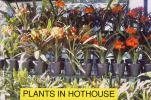
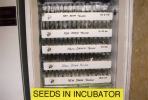
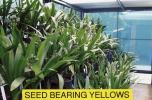
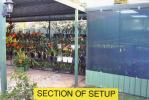
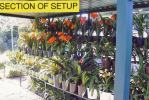
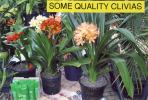
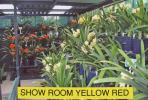
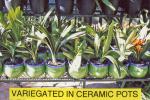
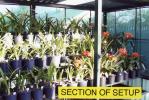
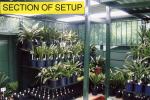
|